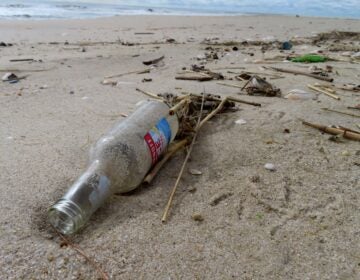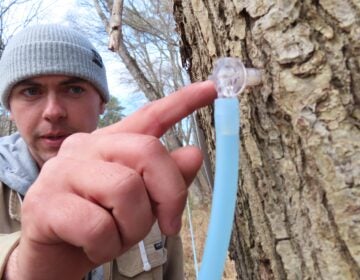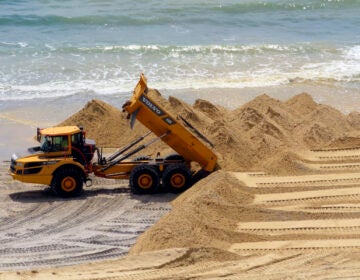N.J. beaches in ‘good shape’ despite numerous nor’easters
Jon Miller of Stevens says the four March storms individually weren't serious. But together, they qualified as the fifth most significant storm over the last 34 years.

A beach entrance in South Seaside Park. (Justin Auciello/WHYY)
Despite what seemed like an unusually stormy winter, New Jersey’s beaches emerged in good shape, even after a series of March storms collectively dubbed the “Foureaster.”
State environmental officials and a coastal engineering expert from Stevens Institute of Technology made the assessment Thursday in Asbury Park, previewing the state of the shore before the Memorial Day weekend.
Department of Environmental Protection Acting Commissioner Catherine R. McCabe said the beaches are in good shape in large part because of the U.S. Army Corps of Engineers projects and the state using the the latest science to develop strong strategies to adapting to climate change.
Jon Miller of Stevens says the four March storms individually weren’t serious. But together, they qualified as the fifth most significant storm over the last 34 years.
He says an average of 20 percent of the sand from recently replenished beaches was lost to erosion over the winter. But that sand is lying just offshore in sand bars that will gradually return to the beach by June or July.
McCabe added that the state has already begun its coastal surveillance flights as part of its water quality management program, which monitors 190 ocean beaches and 31 bay and river beaches throughout the season.
97 percent of the nearly 3,400 water samples collected during the 2017 season met the state’s recreational bathing standard.
Advisories and closings, while rare, generally occur after heavy rainstorms — especially in bay and river beaches without good natural circulation — that can carry bacteria in wastes from gulls, geese, and other birds into affected waters.
“New Jersey has long been a leader in protecting water quality at our beaches because of a strong state and local cooperative monitoring partnership that is second to none in the nation,” McCabe said. “We look forward to another great beach season and remain committed to ensuring all of our coastal resources – so important to the state’s identity and economic vitality – remain protected for all of us to enjoy.”
Tourism at the Jersey Shore contributes $44 billion to the state’s economy.
The Associated Press contributed to this report.
WHYY is your source for fact-based, in-depth journalism and information. As a nonprofit organization, we rely on financial support from readers like you. Please give today.




